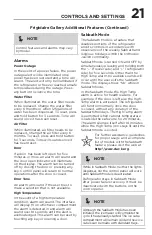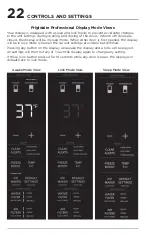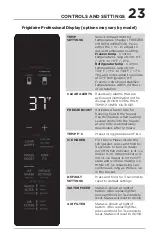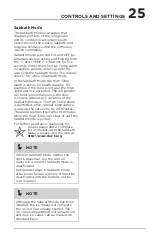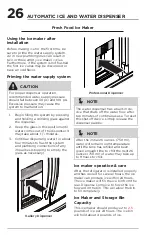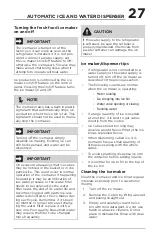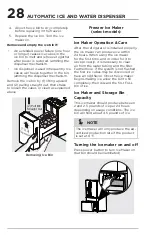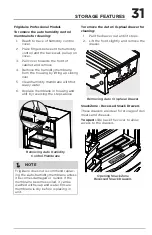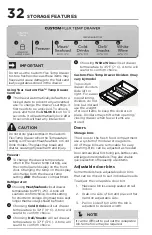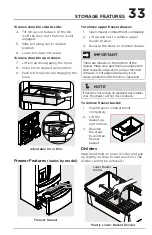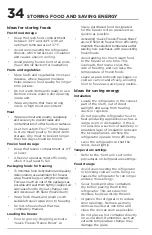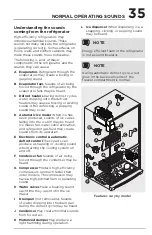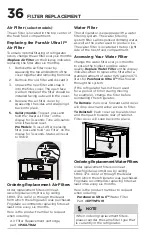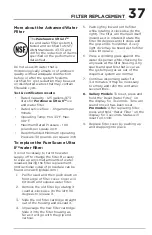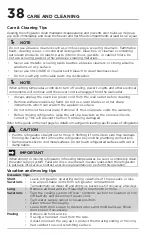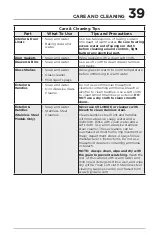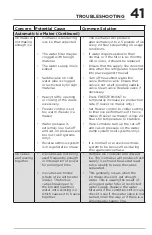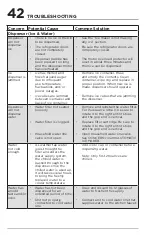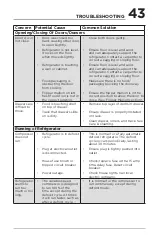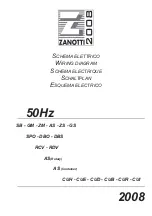
35
NORMAL OPERATING SOUNDS
Understanding the sounds
coming from the refrigerator
High-efficiency refrigerators may
introduce unfamiliar sounds. These
sounds normally indicate the refrigerator
is operating correctly. Some surfaces on
floors, walls, and kitchen cabinets may
make these sounds more noticeable.
The following is a list of major
components in the refrigerator and the
sounds they can cause:
A Evaporators
Refrigerant through the
evaporators may create a boiling or
gurgling sound.
B Evaporator fans
Sounds of air being
forced through the refrigerator by the
evaporator fans may be heard.
C Defrost heaters
During defrost cycles,
water dripping onto the defrost
heaters may cause a hissing or sizzling
sound. After defrosting, a popping
sound may occur.
D Automatic ice maker
When ice has
been produced, sounds of ice cubes
falling into the ice bin may be heard.
Ice maker fan, water valve activation,
and refrigerant gas fluid may create
sounds from its operation.
E Electronic control & automatic
defrost control
These parts can
produce a snapping or clicking sound
when turning the cooling system on
and off.
F Condenser fan
Sounds of air being
forced through the condenser may be
heard.
G Compressor
Modern, high-efficiency
compressors run much faster than
older models. The compressor may
have a high-pitched hum or pulsating
sound.
H Water valves
Make a buzzing sound
each time they open to fill the ice
maker.
I Drain pan
(not removable) Sounds
of water dripping into the drain pan
during the defrost cycle may be heard.
J Condenser
May create minimal sounds
from forced air.
K Motorized damper
May produce a
light humming during operation.
NOTE
Energy efficient foam in the refrigerator
is not a sound insulator.
NOTE
During automatic defrost cycle, a red
glow in the back wall vents of the
freezer compartment is normal.
K
D
Features vary by model
L Ice dispenser
When dispensing ice, a
snapping, clicking, or popping sound
may be heard.

